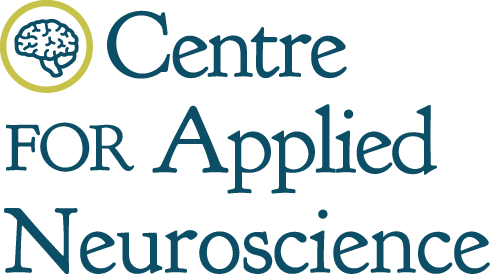Understanding and Harnessing the Power of Dopamine in Our Daily Lives
There has been a lot of discussion about dopamine, the neural chemical associated with reward systems in our brain. This is great because it means people are recognizing that our behaviors, such as social media consumption, binge-watching, and screen time, are related to neural chemicals like dopamine. Moreover, it highlights the bi-directional relationship between our brain's internal functioning and our behavior.
Dopamine, along with other naturally occurring chemicals in our brain, is influenced by drugs. This awareness is crucial because it enables us to understand addictions, not just drug-related ones but also behavioral addictions like social media and binge-watching. This is because, from the brain's perspective, addictions are chemically-mediated.
When it comes to dopamine and the reward system, we usually associate it with pleasure. However, the reward system comprises at least three different psychological experiences: liking, wanting, and learning. Liking refers to the core reactions to something we want, while wanting is the motivation to get that thing. The learning component is the basic association between a stimulus and a response or behavior.
To control our behavior, we need to understand the cycle of consequences related to learning. For example, the behavior of scrolling on social media leads to finding content that we like. This positive consequence reinforces the behavior, increasing the likelihood that we will continue scrolling in the future. We then create an association between the behavior and the pleasurable outcome.
To form healthier habits and improve our mental wellbeing, we need to break bad habits and replace them with good ones. This involves two steps: unlearning or extinguishing the relationship between a bad habit and its perceived reward, and establishing new, positive habits with their respective rewards.
For example, to break a social media addiction, we must stop engaging in the habit of scrolling and seeking that ‘hit’ of dopamine. Simultaneously, we can replace this habit with more beneficial activities, such as exercise, problem-solving, or socializing. These activities not only provide short-term benefits like endorphins and reduced stress hormones but also long-term rewards such as increased strength, feelings of accomplishment, and deeper connections with others.
By consistently practicing these new behaviors, we can form new associations in our brain’s reward system, leading to healthier habits. One strategy to kick-start this process is to commit to a small amount of time for the new habit, such as exercising for just 5 minutes. I now personally I NEVER plan to go for a long run or spend 90 minutes at the gym. But if I commit to 5 or 10 minutes, my body is primed by all the cues that I’m going to feel good soon and it kick-starts the dopamine hit for me, along with flooding me with endorphins and reducing my stress hormones. I barely have to do anything if I hack my system like this. This strategy will often lead to a longer workout session and, over time, a stronger desire to engage in the activity. Plus if we exceed our expectations (i.e., go for more than 5–10 minutes) we are hit with a “success” rather than with a “failure” if we strive for an hour and do less. The former gives us dopamine, the later reduces it along with testosterone, and serotonin, another feel-good neurochemical.
Problem solving is another activity that could give us a dopamine hit, if we let it. When we successfully solve a problem we feel the rush of a success, or in other words, a dopamine-mediated behaviour. It invokes all of the reward system. We like the feeling, we are motivated to get that feeling again, and we learn what behaviours lead to that feeling. Solving big problems are incredible, but similar to the exercise example, I would start small. Wordle figured this out and as a result many people solve those problems daily. Plus, they embedding in their app a time limit.
Socializing is the last example I’ll share, even though there are countless more. I personally love-hate socializing. I get so much social anxiety and I often reinforce avoiding events by not going. The reinforcing stimulus for not going is the good feelings I get. But if I go, I also tend to have a good rush of dopamine with every good conversation I find myself in or deep connection I make. That too surges dopamine. But for me to get out the door I need an exit strategy. Kind of like going to the gym, I commit to an hour or 30 minutes, and then almost always stay longer.
As part of my own process of re-establishing a healthier scrolling habit — short of quitting all together — I hacked my brain by moved IG to the back of my phone so I have to scroll far to get there. And since that creates an obstacle that I don’t like, I avoid the time to get there by not going as often (that’s actually negative reinforcement) Then, I put my Stats Canada app on the front page of my phone and when I feel the urge to scroll I head there. Yes, I’m a geek. But it’s great because the surges I get are hits of cool data… which sometimes leads to surges of great ideas, at least ideas that my brain thinks are great and as a result my brains registers those ideas as a dopamine hits. Yes, a geek.
Understanding the power of dopamine and our brain’s reward system can help us make better choices and establish healthier habits. By breaking bad habits and replacing them with positive ones, we can harness our brain’s natural chemicals for improved mental health and wellbeing.
For more information read:
Berridge KC, Kringelbach ML. Pleasure systems in the brain. Neuron. 2015 May 6;86(3):646-64. doi: 10.1016/j.neuron.2015.02.018. PMID: 25950633; PMCID: PMC4425246. https://www.ncbi.nlm.nih.gov/pmc/articles/PMC4425246/
The Science of Habit What does it take to stick with something long term? You just have to rewire your brain. https://www.healthline.com/health/the-science-of-habit#12
